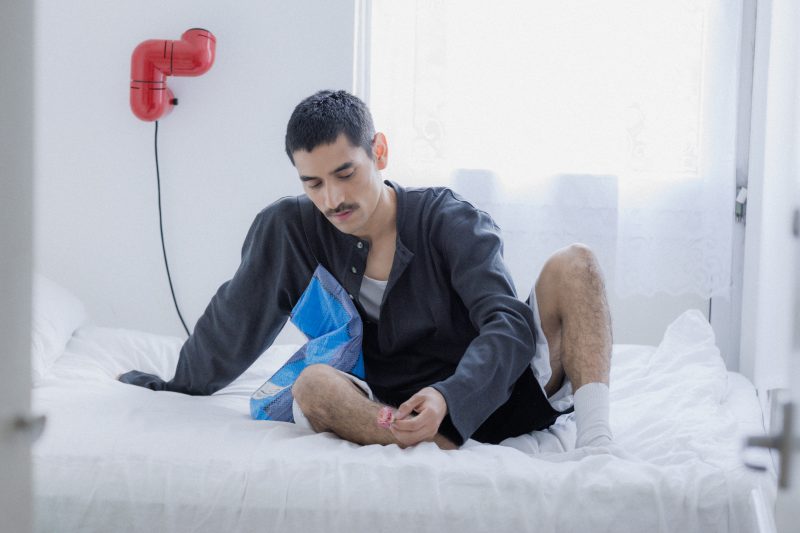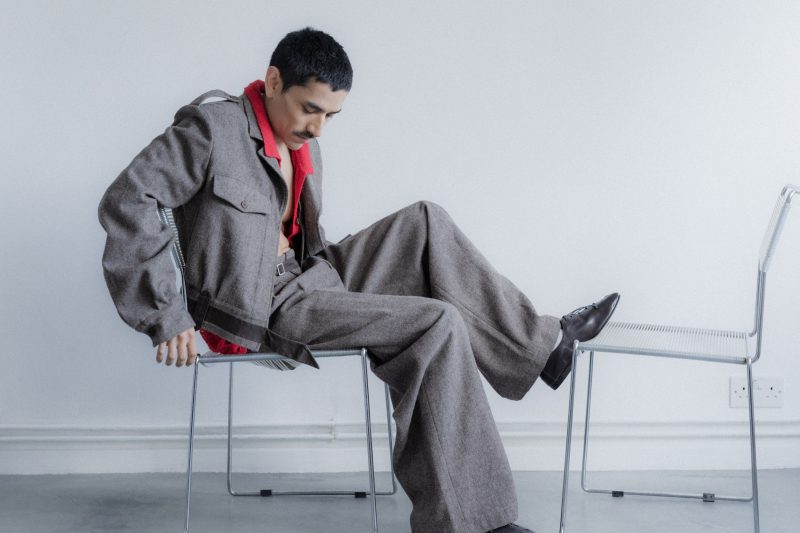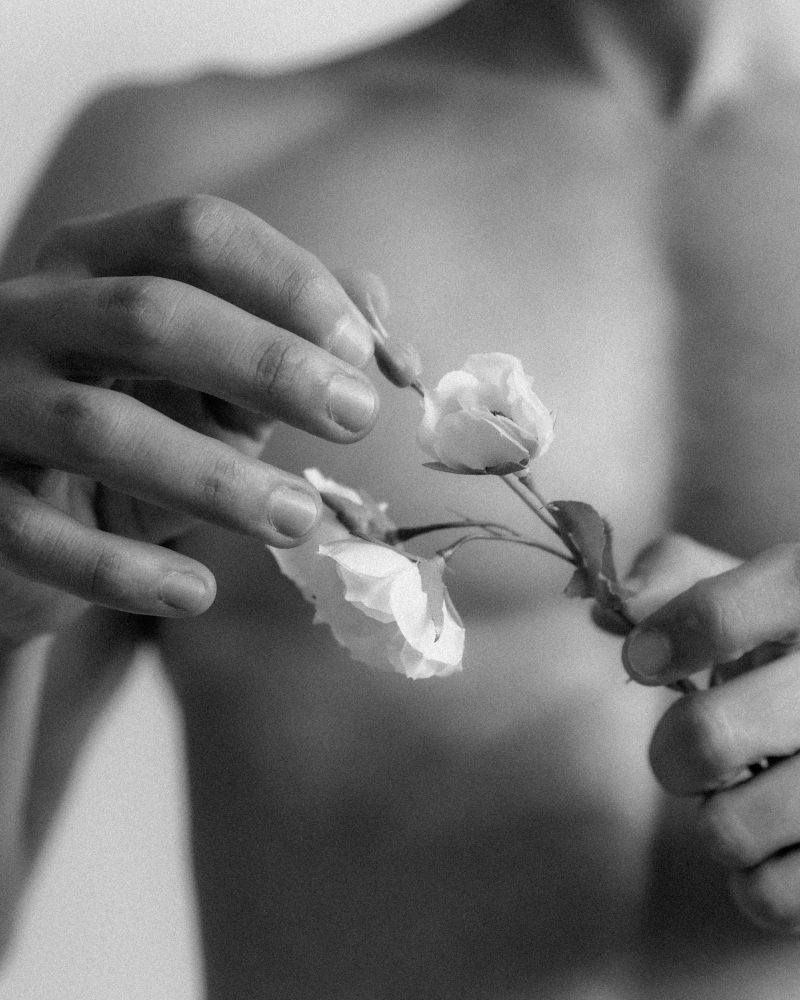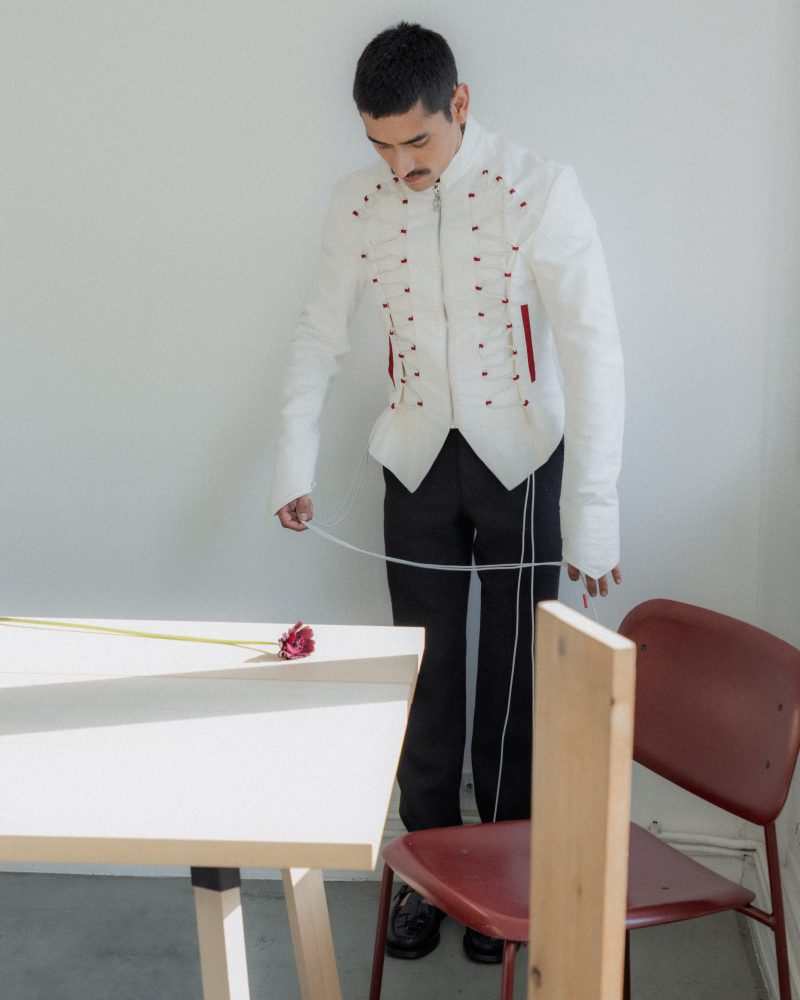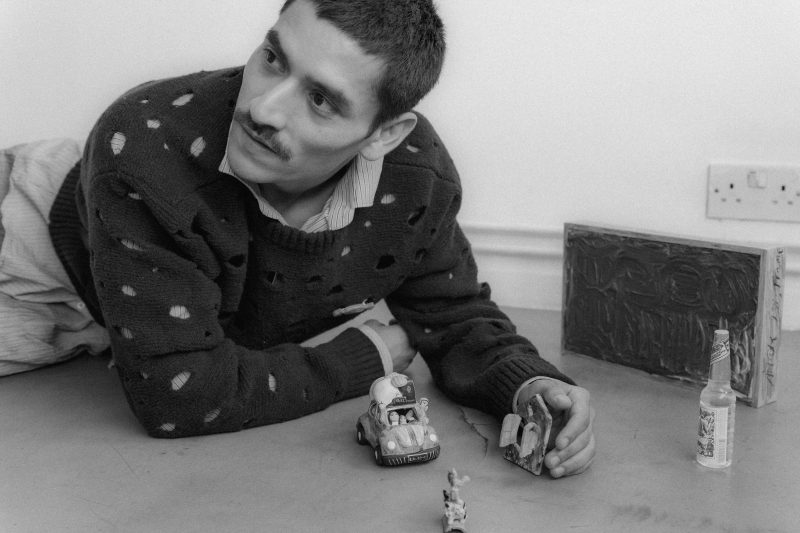Aitor González’s work is crossed by family stories, journeys and cultural roots that entwine with one another. Of Quechua-Spanish origin and resident in London, the artist constructs an imaginary world made up of figures, scattered memories and symbols that refer as much to Peru as to Europe. In this small talk, González narrates how his mother’s stories, visits to museums in Lima, life between different countries and a intentionally slow creative pace influence his practice. What we have here is his process, the daily routine of his studio and the themes that guide the further development of his work from his point of view.
Gaia V. Marraffa: Your artistic practice is deeply connected to your origins. Being of Quechua-Spanish descent and living in London, what aspects of your personal history do you feel emerge in your work?
Aitor González: Many of the stories my mum has been sharing from her upbringing shift each time they are told. There are always details changing, characters appearing and disappearing, magic elements coming in and out. With perspective, I see my work living in that space between memory and fable. The drawings feel fragmented, like windows into a parallel worlds where recurring motifs return with their own quiet logic. Like with those stories she tells, I want my work to have a soft, reflective voice, not academic, not over-explaining with a sense of tenderness, openness…
GM: What’s a “typical day” in your studio? Take us through the space, the first thing you do in the morning, the object, light or sound that puts you in the right frame of mind to create.
AG: I’ve had a small studio near my flat in East London for four years that I’ve kept intentionally sparse: a table, two chairs, a few shelves. I try to remove distractions, often leaving my laptop at home so I can be fully present. Most days I wake with the sun, make coffee and cycle to the studio which has become a quiet, meditative start. I often listen to music during the day, nothing with lyrics but love listening to soundtracks and lately I have been obsessed with Umebayashi. I often see friends that have studios nearby for a coffee and go back until I get tired and need a break.
GM: Your work often showcases recurring themes: transitions among plants, animals, and religious symbols, as well as dreams and family memories. What criteria do you use to select the materials and figures you wish to depict, and in what ways do you believe they reflect your inner world?
AG: Many of the motifs in my work come from images I encountered while visiting family in Peru. My dad and I used to go to Museo Larco in Lima as soon as we landed, my favourite place and a museum that left a deep imprint on me. I was fascinated by the textiles and religious vessels depicting beings that shifted between animal, human, and plant. They echoed the fluid way my mother told stories, where characters transformed or slipped in and out of scenes. These hybrid figures feel close to a dreaming, where memory becomes less factual and more like an emotional, shifting landscape
GM: Your work appears to traverse areas of migration, change, and cultural intertwining: how do you experience that “between-places” in everyday life? And how do you transform it into painting?
AG: I myself exist because of interwoven processes of colonisation and resistance, violence, migration. It has been a complex journey but I feel now that unconsciously; I do live inside those processes. When I left Spain for the UK, I recognised echoes of my families own moves small frictions in language, belonging, and how you learn to hold two homes at once. That feeling stays with me every day. In the studio it becomes a visual space where things exist in an in-between state without trying to resolve it.
GM: Looking ahead, is there a theme, technique or material that you feel is emerging for you and that you have not yet shown to the public but feel is your next leap forward?
AG:Lately I’ve been thinking a lot about my grandfather’s wooden boxes. He made them from found wood and carved these geometric patterns that felt both rough and incredibly precise. They were really objects of love,he would gift them to my grandma as a present, quiet but full of intention. I’ve been drawn to that combination of simplicity, intention and care, and I feel like I would lie to explore that more in my practice.
GM: What has been the most unexpected challenge you have encountered in your artistic career to date, and what have you learned from it?
AG: The biggest challenge has been learning to trust the slowness of my own work. I started showing quite young, and for a while I felt pressure to constantly produce or explain myself. It created a disconnect between what I needed and what I thought was expected of me. The real shift came when I allowed the work to move at its own rhythm, even if that meant pausing, changing direction, or starting again. I learned that protecting that inner pace is essential for the work to stay honest.
GM: If you could tell the public who sees your work just one thing about yourself or your work, what would it be? What do you hope will stay with those who enter your studio through images and words?
AG: I’d tell them that the work comes from a place of care. Even when the drawings look like fragments or dreams, they carry real histories, my family’s, my own, and the ones that drift between memory and imagination. I hope people feel a quiet intimacy when they see them, like entering a shifting world where things keep rearranging themselves. If something stays with them, I’d want it to be a feeling rather than a message: something soft, emotional and enduring.

